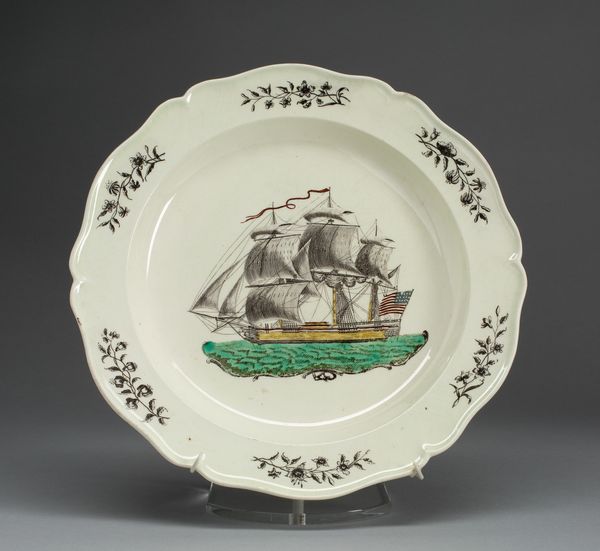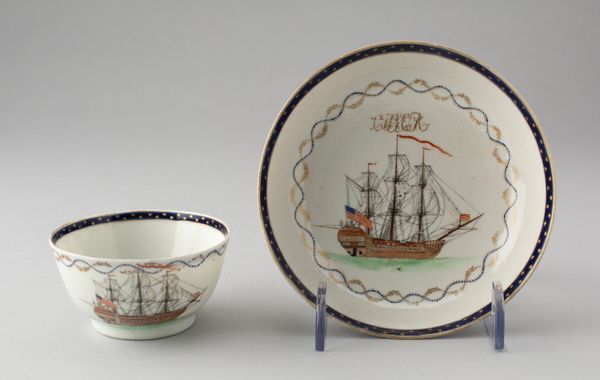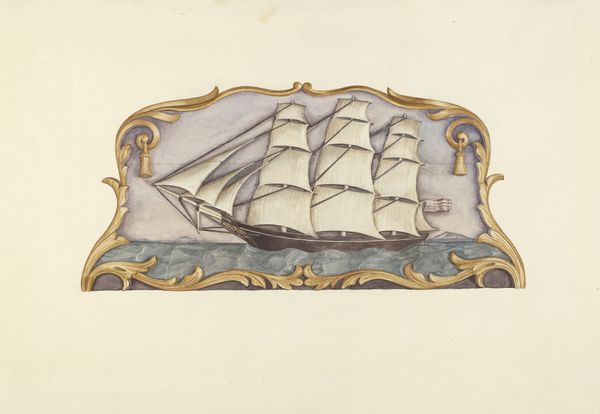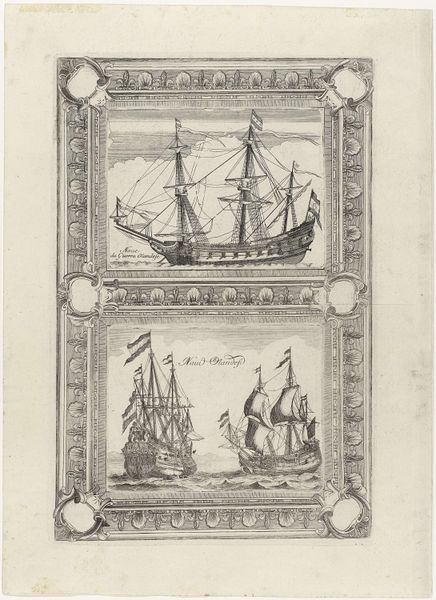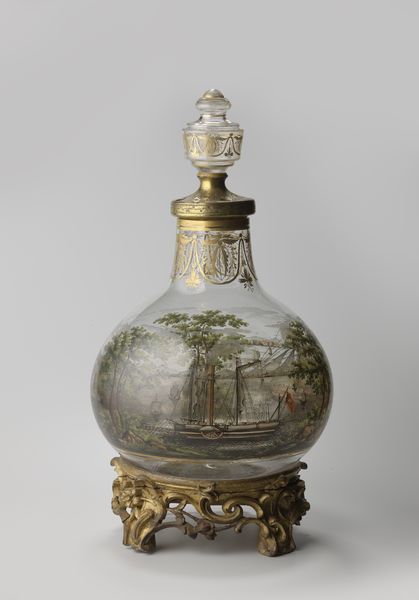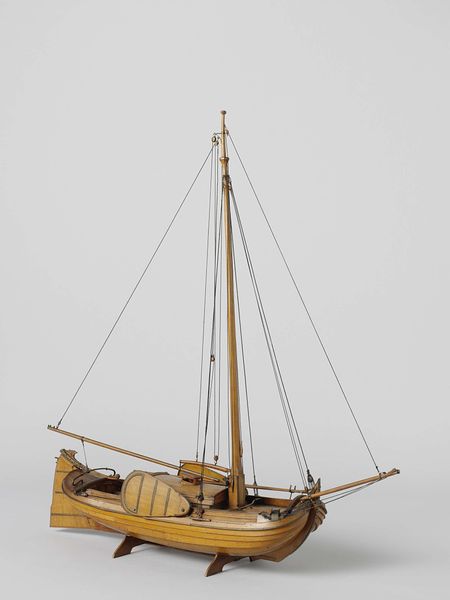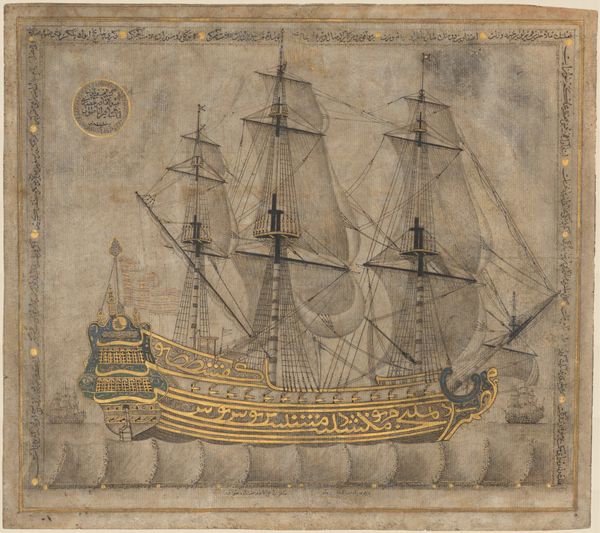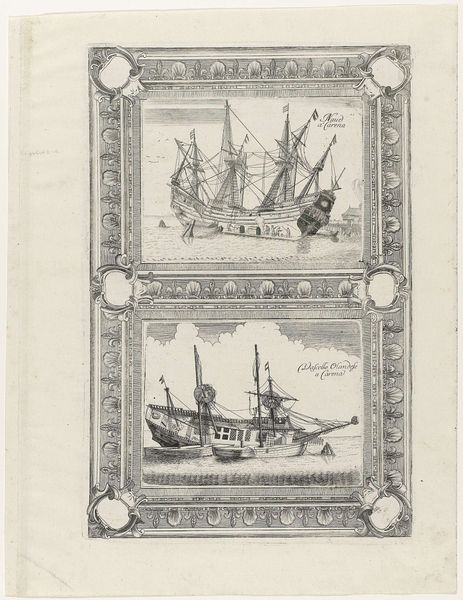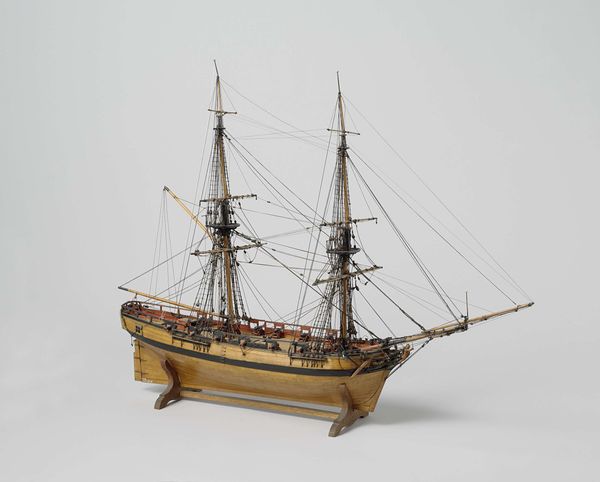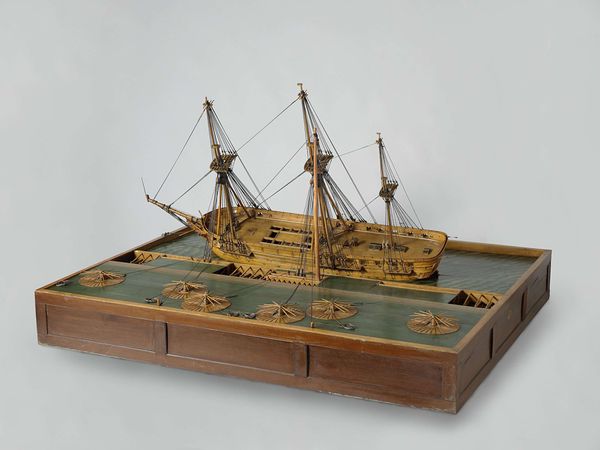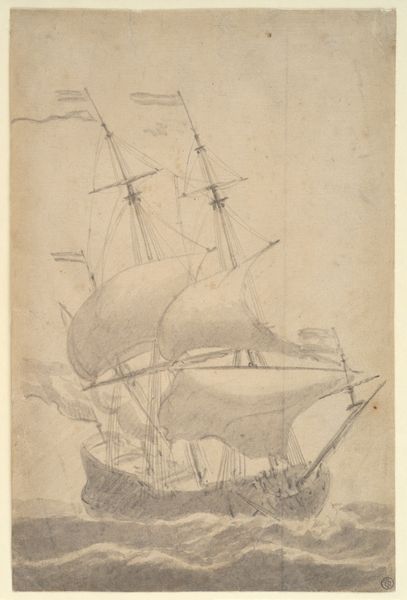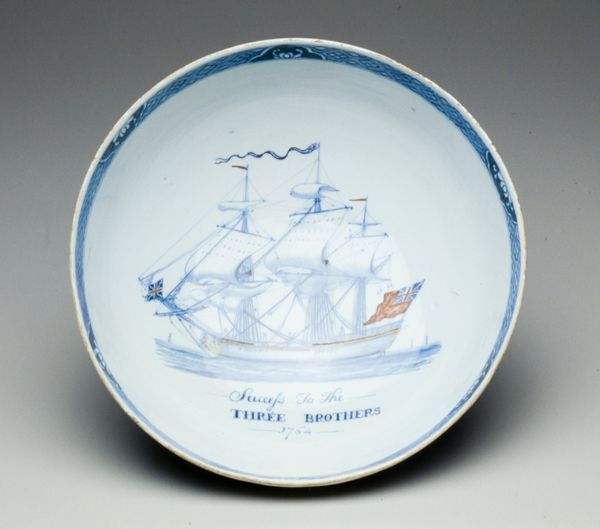
metal, engraving
#
historical design
#
narrative-art
#
baroque
#
dutch-golden-age
#
metal
#
landscape
#
history-painting
#
engraving
Dimensions: diameter 6.8 cm, length 9.8 cm, weight 132.6 gr
Copyright: Rijks Museum: Open Domain
Editor: Here we have Isaac Rochussen's "Conquest of an English Ship," an engraving on metal from 1672, held at the Rijksmuseum. Given the size and medium, it feels almost like a coin commemorating a specific event. What stories do you see within this piece? Curator: It’s interesting to consider how this object, seemingly a commemorative token, functions within the power dynamics of the Dutch Golden Age. Beyond the triumphant depiction of naval conquest, can we unpack what this object signifies in terms of national identity and colonial ambitions? Think about the visual language being employed here. What does it tell us about how the Dutch Republic saw itself and its relationship to England at the time? Editor: Well, I notice the Dutch ships seem larger, more detailed, maybe more powerful-looking than the English ships. Is that a deliberate exaggeration, a kind of propaganda? Curator: Precisely! The representation is strategic. It presents a very particular narrative, effectively minimizing the English and celebrating Dutch naval dominance. Remember, these images weren’t simply records; they actively shaped public perception. Who were these medallions intended for, and what purpose did they serve in constructing and reinforcing a national consciousness? Editor: So it’s less about accurately portraying a historical event, and more about solidifying a national myth, or a particular version of history? Curator: Exactly. And that’s why examining this artwork through an activist lens is vital. It pushes us to question the narratives we inherit and to be critical of how power operates through art. How do these kinds of portrayals of naval conflict and colonial power reverberate into contemporary discussions about nationalism and historical memory? Editor: That's a very different way to think about what this seemingly straightforward depiction of a sea battle actually means. Curator: Indeed, looking closely can unearth so much more than just what’s on the surface. Hopefully, this reframing encourages others to delve deeper as well.
Comments
rijksmuseum about 2 years ago
⋮
People who have performed a heroic deed or reached the end of a long career are sometimes awarded a medal as a token of esteem and gratitude. Often these are made of gold. Especially in the seventeenth century, gold medals with their chains were literally a reward. They were subsequently melted down and converted into money, which is why so few have survived.
Join the conversation
Join millions of artists and users on Artera today and experience the ultimate creative platform.
